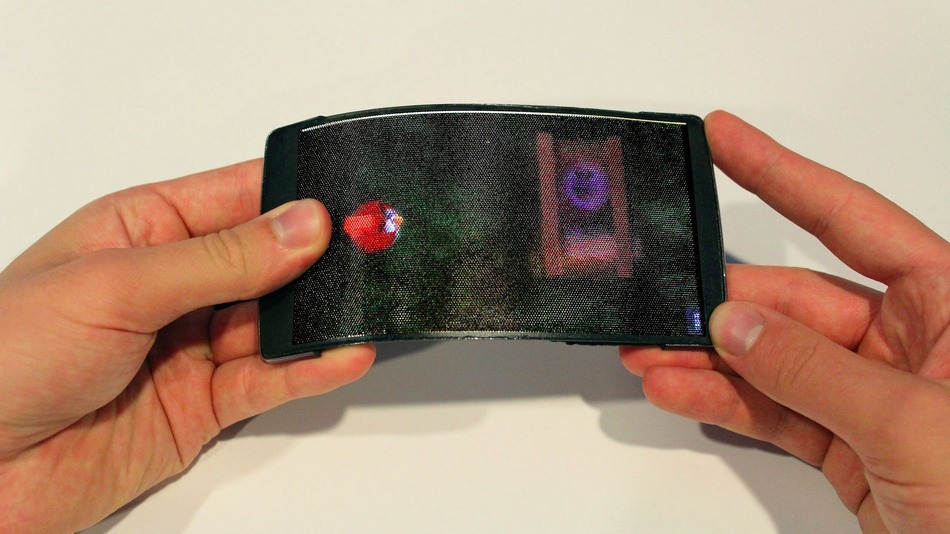-
Tips for becoming a good boxer - November 6, 2020
-
7 expert tips for making your hens night a memorable one - November 6, 2020
-
5 reasons to host your Christmas party on a cruise boat - November 6, 2020
-
What to do when you’re charged with a crime - November 6, 2020
-
Should you get one or multiple dogs? Here’s all you need to know - November 3, 2020
-
A Guide: How to Build Your Very Own Magic Mirror - February 14, 2019
-
Our Top Inspirational Baseball Stars - November 24, 2018
-
Five Tech Tools That Will Help You Turn Your Blog into a Business - November 24, 2018
-
How to Indulge on Vacation without Expanding Your Waist - November 9, 2018
-
5 Strategies for Businesses to Appeal to Today’s Increasingly Mobile-Crazed Customers - November 9, 2018
HoloFlex is a flexible, holographic smartphone
HoloFlex also can be used for holographic gaming.
Advertisement
Researchers at the Human Media Lab at Queen’s University (Kingston, Canada) have developed the world’s first holographic flexible smartphone. Feature phones have been gradually phased out and replaced by smartphones, and over the past 10 years or so, numerous OEMs have pushed the limits of mobile / pocket computing to new heights. Built from Flexible Organic Light Emitting Diode (FOLED) technology, the screen converts images into circular 12-pixel wide blocks before projecting them through a flexible array of 16,000 fisheye lenses.
When the HoloFlex is bent, the full HD (1,920 x 1,080) touchscreen is capable of displaying a glasses-free 3D image. The result is a 160 x 104 resolution 3D object that can be viewed from any angle by rotating the phone.
The Human Media Lab has brought an app that allows you to edit 3D models for goals like 3D printing. In addition to the oft stated upsides of a bendy smartphone, a built-in bend sensor (similar to what the lab deployed in its recent ReFlex prototype) leverages the motion as another means with which to interact with the handset.
“In a game such as Angry Birds, for example, users would be able to bend the side of the display to pull the elastic rubber band that propels the bird”, according to a news release. Additionally, through using a depth camera, the device will provide enriched 3D video conferencing capabilities that enable more immersive interaction between users. “When the bird flies across the screen, the holographic display makes the bird literally pop out of the screen in the third dimension”.
“When bending the display users literally pop out of the screen and can even look around each other, with their faces rendered correctly from any angle to any onlooker”, says Dr. Vertegaal. But the lab has some grand plans, including holographic video conferences.
Advertisement
Under the hood, the holographic HoloFlex has a 64-bit Qualcomm Snapdragon 810 chipset with an octa-core CPU and 2GB of RAM. The team will be fully unveiling HoloFlex on Monday at the ACM CHI 2016 conference in San Jose, California.




























